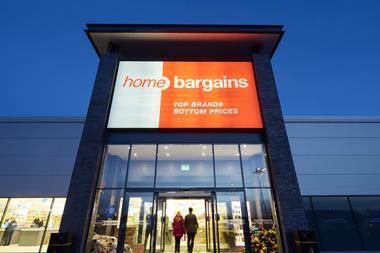
There was plenty of reaction to the recent news that online fashion retailer Asos is abandoning its three-year-old A-List loyalty programme, even though it was popular among those customers who engaged with it.
The naysayers said it was proof that loyalty is dead. Others said it was evidence that the notion of loyalty was at least outdated and could be superseded by a laser focus on providing the best customer experience.
I completely agree that the core of a brand’s attraction must be a great customer experience. The business fundamentals have to be in place and competitive before a loyalty scheme has any chance of succeeding. In that sense, loyalty is far from dead, but loyalty schemes are evolving for our digital age.
It was pointed out to me in the mid-90s by David Malpas, then managing director of Tesco, that we could not have launched Clubcard much earlier because a loyalty scheme is icing on the cake, and there is no point in icing a poor cake.
Opinion: As loyalty gets more personal and immediate, Clubcard is moving with the times
Loyalty schemes today have three key deliverables:
1. They enable you to identify your best customers and reward them for their custom.
2. They open up a direct-to-consumer marketing channel, which is free and capable of personalisation.
3. They generate data through a consumer lens, which enables you to run your business better.
Digital pureplays achieve most of these as a natural by-product of the way they do business and, therefore, can fund loyalty-generating initiatives purely from measuring changed customer behaviour in response to promotions, which is otherwise tough to justify. This is why a full-blown loyalty scheme is much more valuable to a bricks and mortar retailer than it is to a pureplay.
For a bricks retailer a loyalty scheme helps drive promotions, as well as providing customer data gathering and direct marketing capabilities. A pureplay doesn’t need a scheme – it can just deliver promotions.
More from Tim Mason: Loyalty will be key at the new discount Tesco
I remember when we discussed whether we should include the ability to earn Clubcard points in the fledgling Tesco.com business. We knew we didn’t need it as a data play, but we included it because the loyalty scheme was part of the total customer offer that glued the Tesco brand together.
So, it makes perfect sense for Asos to shutter A-List. It said in a statement it would ‘work on even better ways to reward our loyal customers’ instead. It can drive loyalty through its subscription-based unlimited Premier Delivery scheme. In the same way, I have heard Amazon Prime described as the best loyalty scheme ever – by which was meant that rapid delivery subscriptions can be the single biggest driver of abnormal levels of loyalty.
The long and the short of this is, if you are competing with Asos, Amazon, Ocado, Tesco.com and the like, you are competing with businesses that are digitally enabled and data driven. Unless you match this competitive capability using the mechanisms of loyalty, you will join the list of losers on the high street.
Tim Mason is CEO of Eagle Eye



















No comments yet